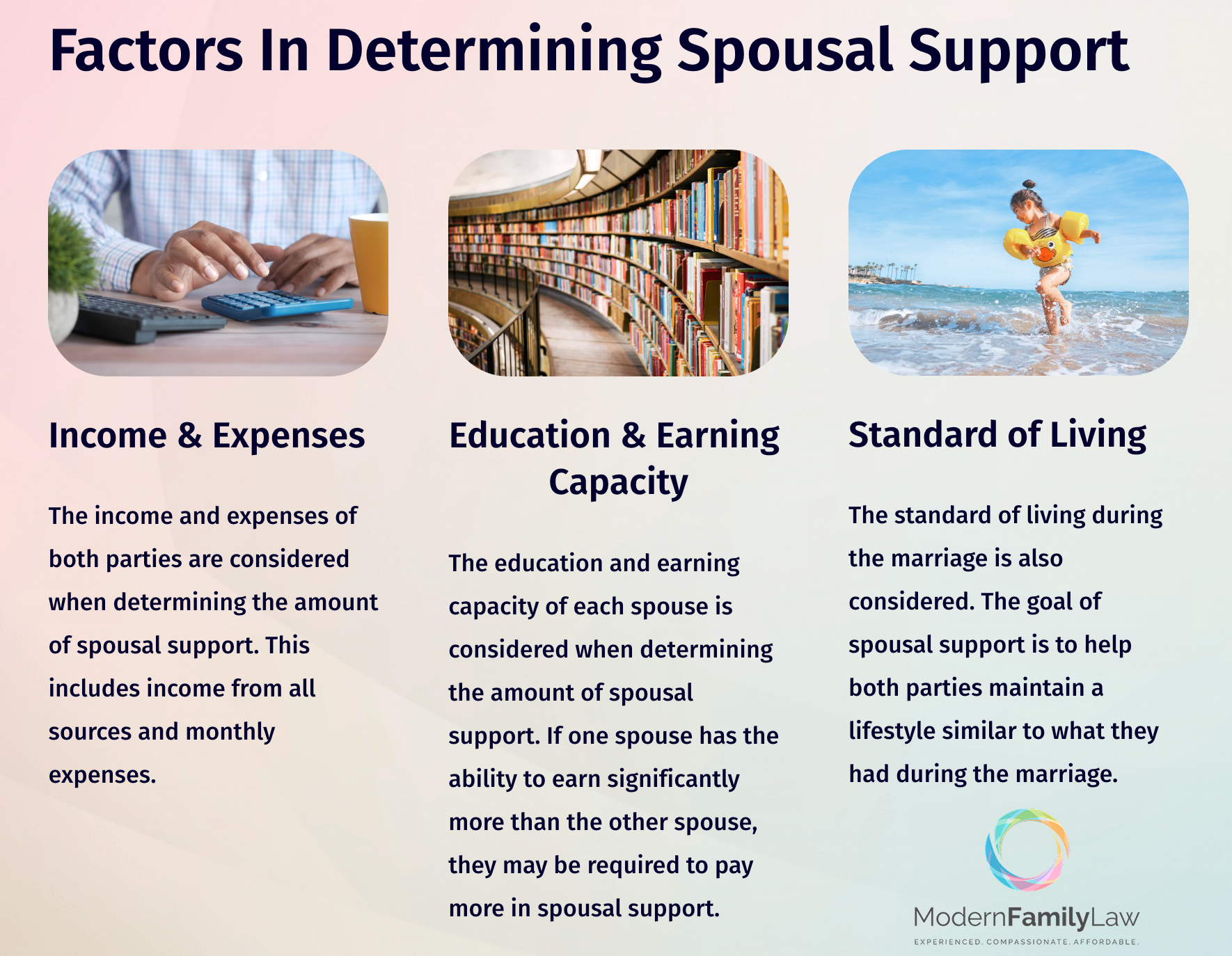Factors Considered In A California Alimony Judgement
When it comes to spousal support judgments in California, different rules apply to temporary and long-term spousal support. Understanding the factors considered in determining who pays alimony, the amount of payments, and the duration is essential for a fair and equitable resolution.
Who Pays Spousal Support In California?
California laws on spousal support are gender-neutral, allowing either spouse to request support. If one spouse requires financial assistance and the other has the means to provide it, the judge will typically order the higher-earning spouse to pay alimony to the lower-earning spouse, irrespective of their gender.
Calculating Temporary Alimony In California
Determining the need for temporary alimony in California involves maintaining the standard of living enjoyed by the couple during the marriage. It’s important to note that supporting two households is typically more costly than sharing one. While both spouses may not be able to sustain their previous living standards entirely, the objective of temporary alimony is to maintain the status quo until the divorce is finalized.
Many California counties utilize guidelines or formulas to calculate temporary spousal support. Although these guidelines may vary, a common formula involves taking 40% of the high earner’s net monthly income and subtracting 50% of the low earner’s net monthly income. Our California spousal maintenance calculator can give you a good estimate of what this may look like or you can speak with one of our experienced California attorneys for a more accurate idea.
Factors For Determining Long-Term Spousal Support
Unlike temporary support, California does not rely on a specific “calculator” to determine long-term spousal support. Instead, judges carefully consider several factors before reaching a decision. These factors include:
1. Standard of Living: Each spouse’s needs are evaluated based on the standard of living they maintained during the marriage.
2. Earning Capacity: The judge assesses the ability of each spouse to earn enough to sustain that standard of living. Factors considered include marketable skills, job market conditions, necessary training, and any career setbacks resulting from time taken off work to care for children or the household during the marriage.
3. Ability to Pay: The financial capability of the supporting spouse to provide alimony is examined.
4. Self-Sufficiency: The goal is for the recipient spouse to become self-supporting within a reasonable period. The judge evaluates the supported spouse’s ability to secure gainful employment without significantly impacting the best interests of any children involved.
5. Age and Health: Each spouse’s age and health are taken into account.
6. Debts and Assets: The judge reviews the debts and assets of each spouse, including separate property.
7. Duration of the Marriage: The length of the marriage is a significant factor in determining long-term spousal support.
8. Contribution to Education or Professional Licenses: Any contribution the supported spouse made to the other spouse’s education or professional licenses during the marriage is considered.
9. Domestic Violence: A documented history of domestic violence against either party or the children is factored into the decision.
10. Tax Consequences: The tax implications of spousal support payments are taken into consideration.
11. Balancing Hardships: The judge carefully weighs the balance of hardships experienced by each spouse.
12. Other Factors: The judge may consider any additional factors they deem relevant and fair to the case.







